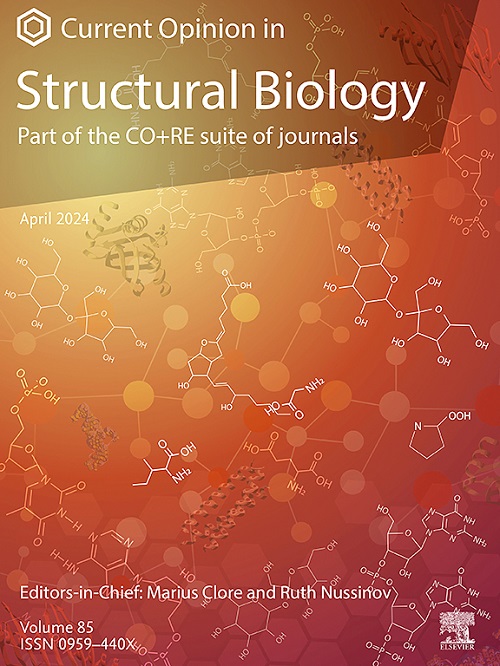Quantitative analysis methods for free diffusion single-molecule FRET experiments
IF 6.1
2区 生物学
Q1 BIOCHEMISTRY & MOLECULAR BIOLOGY
引用次数: 0
Abstract
Single-molecule Förster Resonance Energy Transfer (smFRET) is a powerful technique for investigating the structure and dynamics of biomolecules. This review focuses on recent advances in quantitative methods to analyze freely diffusing molecules in smFRET. The methods include traditional approaches of analyzing FRET efficiency and advanced photon-by-photon techniques based on maximum likelihood estimation without binning photon sequences. More recently, methods explicitly accounting for molecular diffusion have been developed, addressing biases arising from variations in brightness and diffusivity among molecular states and species. Applications of these tools include studies of protein folding, DNA dynamics, and oligomerization processes of neurodegenerative proteins. These advancements expand the ability of free diffusion-based smFRET to elucidate the dynamic behavior of biomolecules on the timescales relevant to their biological processes.
自由扩散单分子FRET实验的定量分析方法
单分子Förster共振能量转移(smFRET)是研究生物分子结构和动力学的有力技术。本文综述了近年来smFRET中自由扩散分子的定量分析方法的研究进展。方法包括传统的FRET效率分析方法和先进的基于最大似然估计的光子-光子技术。最近,已经开发了明确考虑分子扩散的方法,解决了分子状态和物种之间亮度和扩散性变化引起的偏差。这些工具的应用包括蛋白质折叠、DNA动力学和神经退行性蛋白质的寡聚化过程的研究。这些进展扩大了基于自由扩散的smFRET的能力,以阐明生物分子在与其生物过程相关的时间尺度上的动态行为。
本文章由计算机程序翻译,如有差异,请以英文原文为准。
求助全文
约1分钟内获得全文
求助全文
来源期刊

Current opinion in structural biology
生物-生化与分子生物学
CiteScore
12.20
自引率
2.90%
发文量
179
审稿时长
6-12 weeks
期刊介绍:
Current Opinion in Structural Biology (COSB) aims to stimulate scientifically grounded, interdisciplinary, multi-scale debate and exchange of ideas. It contains polished, concise and timely reviews and opinions, with particular emphasis on those articles published in the past two years. In addition to describing recent trends, the authors are encouraged to give their subjective opinion of the topics discussed.
In COSB, we help the reader by providing in a systematic manner:
1. The views of experts on current advances in their field in a clear and readable form.
2. Evaluations of the most interesting papers, annotated by experts, from the great wealth of original publications.
[...]
The subject of Structural Biology is divided into twelve themed sections, each of which is reviewed once a year. Each issue contains two sections, and the amount of space devoted to each section is related to its importance.
-Folding and Binding-
Nucleic acids and their protein complexes-
Macromolecular Machines-
Theory and Simulation-
Sequences and Topology-
New constructs and expression of proteins-
Membranes-
Engineering and Design-
Carbohydrate-protein interactions and glycosylation-
Biophysical and molecular biological methods-
Multi-protein assemblies in signalling-
Catalysis and Regulation
 求助内容:
求助内容: 应助结果提醒方式:
应助结果提醒方式:


